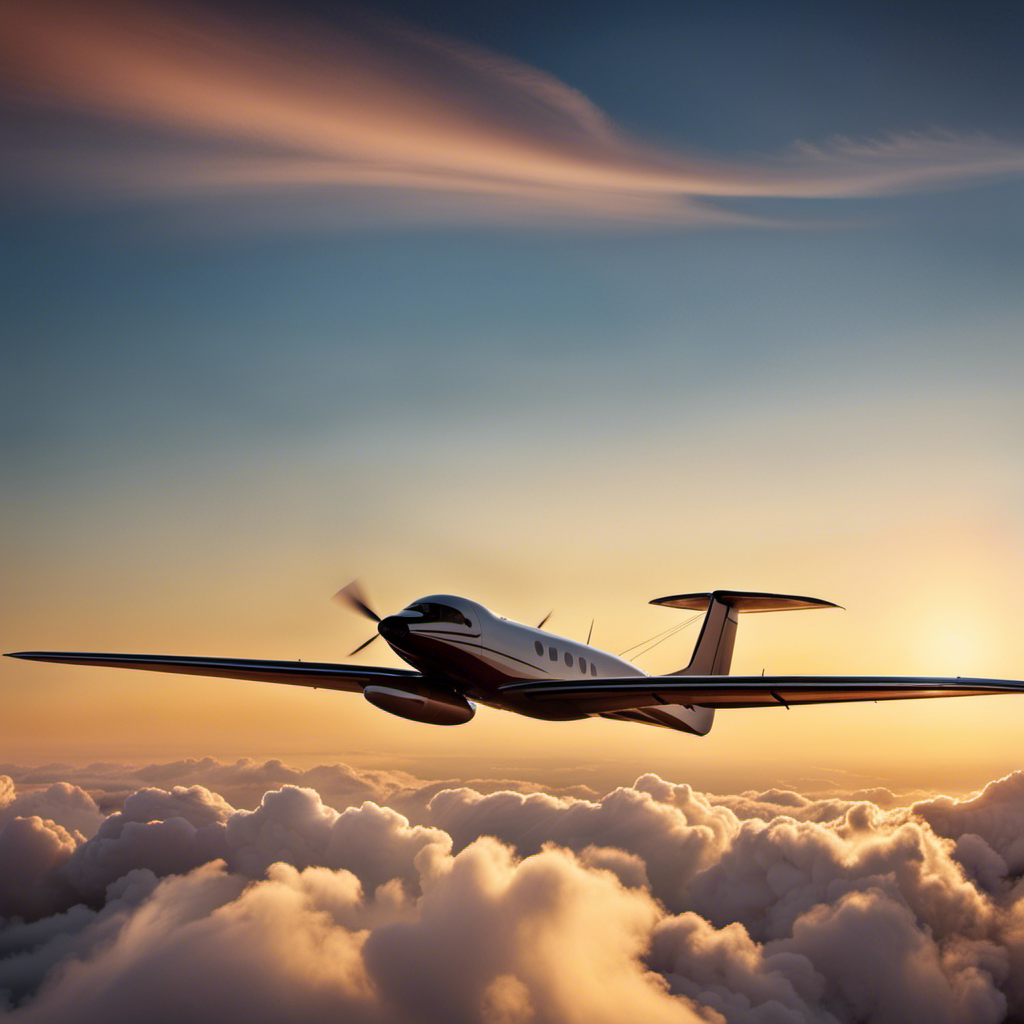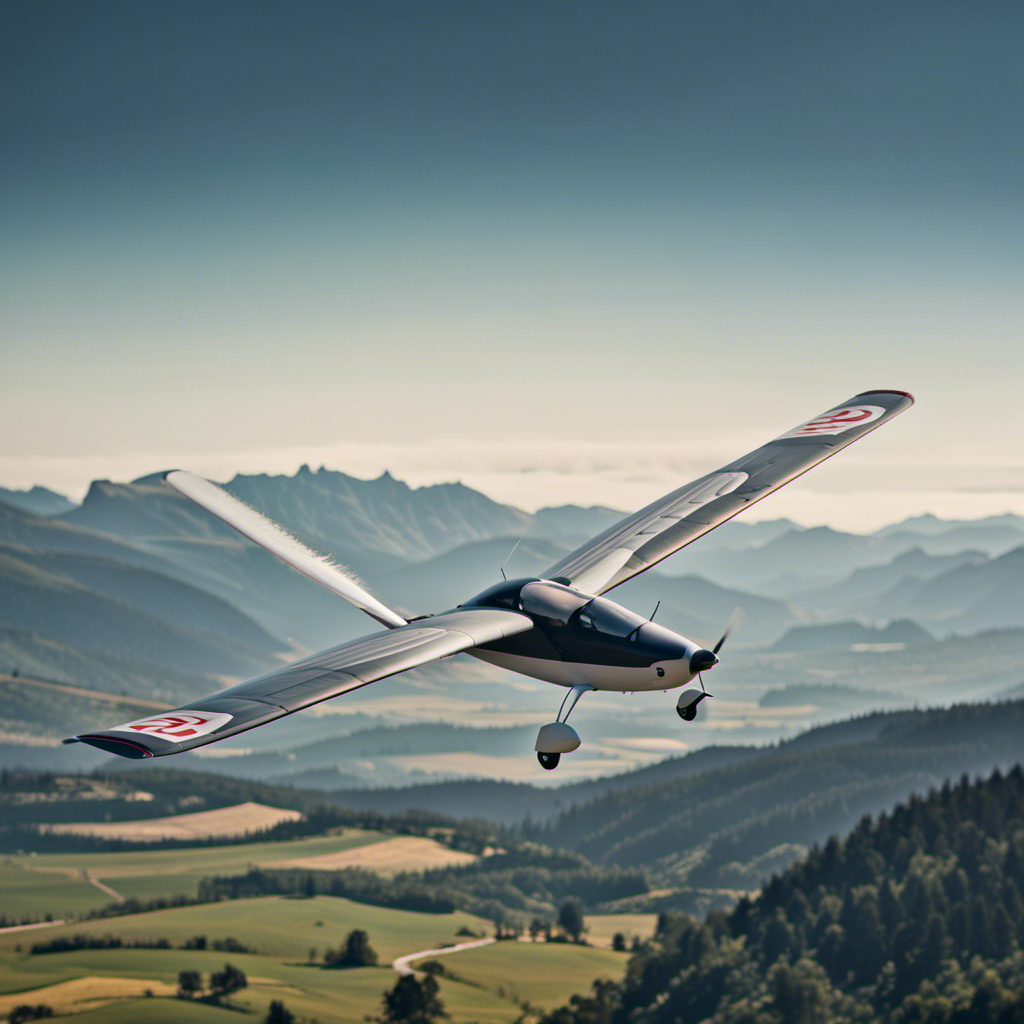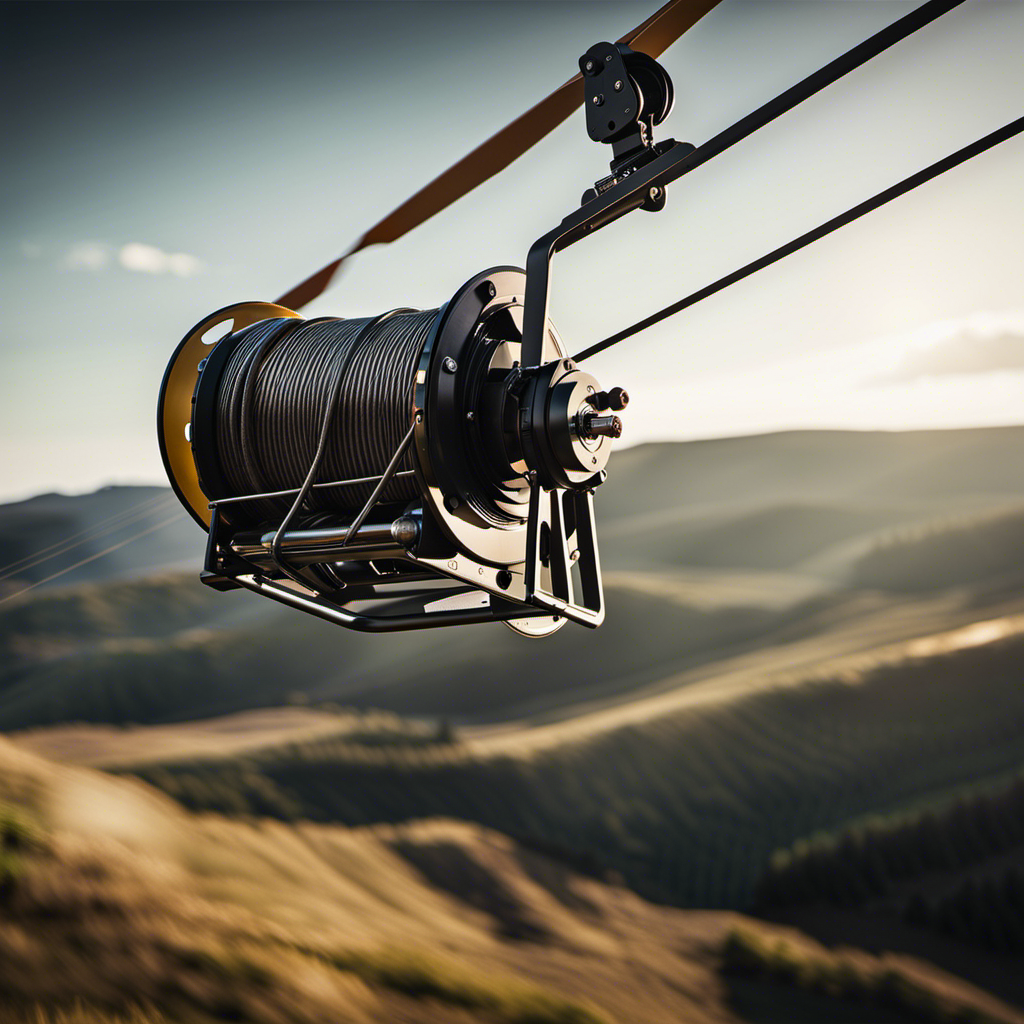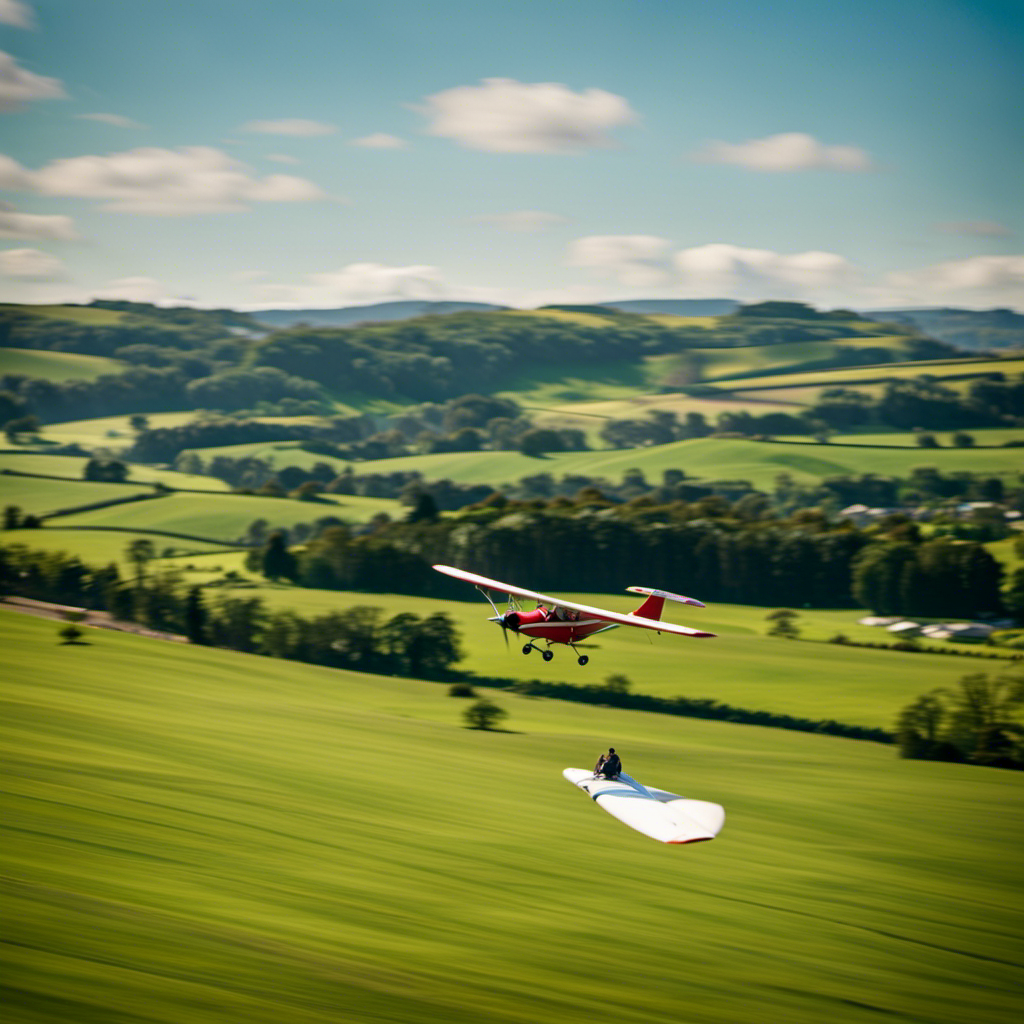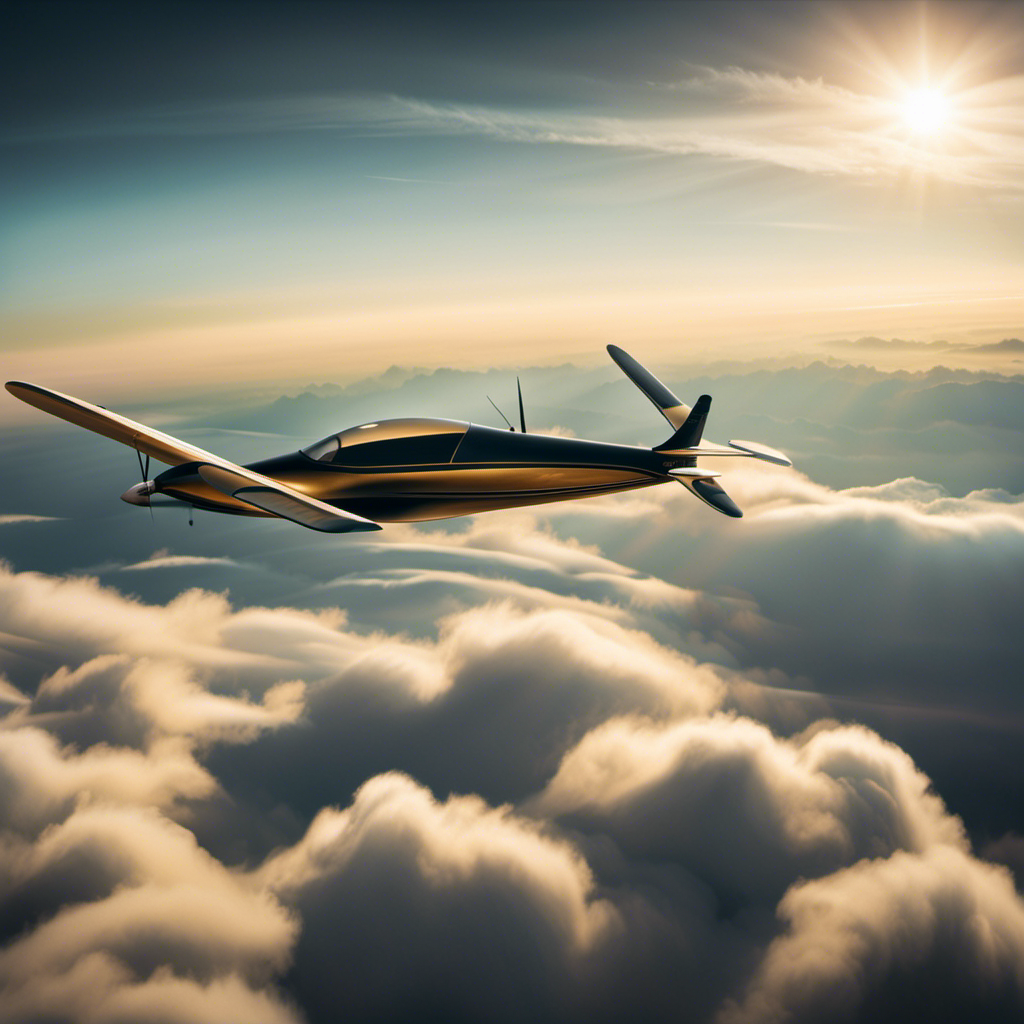I’ve always been fascinated by the idea of flying high in the sky, feeling the rush as the wind touches my skin.
But before taking the leap, I wanted to understand the costs involved in investing in a glider plane.
In this article, I’ll provide an overview of the various expenses to consider, from the purchase price to maintenance costs, storage fees to training and licensing fees.
So, if you’re like me, eager to explore the world of gliding, keep reading to discover the financial aspects you need to know.
Key Takeaways
- Annual inspections and certifications are necessary to maintain airworthiness and safety compliance.
- Upgrades and modifications can enhance a glider’s performance, safety, and customization options.
- Gliders have minimal fuel consumption and operational expenses compared to powered aircraft.
- Joining a gliding club offers cost-effective access to well-maintained gliders and facilities.
Purchase Price
You’ll need to consider the purchase price of the glider plane before making any decisions. The purchase price is a crucial factor that will determine the overall cost of owning a glider. Glider planes can vary significantly in terms of price, depending on factors like brand, model, and condition. It’s important to research and compare prices from different sellers to ensure you’re getting the best deal.
When considering the purchase price, it’s also essential to think about financing options. Glider planes can be quite expensive, and not everyone has the means to pay the entire amount upfront. Many buyers opt for financing options such as loans or leasing agreements. These options allow you to spread out the cost over a period of time, making it more manageable.
Transitioning into the subsequent section on maintenance costs, it’s important to note that the purchase price is just the beginning of the expenses associated with owning a glider plane. Alongside the initial investment, you’ll also need to consider the ongoing costs of maintenance and upkeep.
Maintenance Costs
When it comes to keeping up with maintenance, it’s important to understand the potential costs involved. Glider maintenance can be a significant expense for owners, but there are ways to reduce these costs. By following some glider maintenance tips and being proactive, you can keep your glider in good condition while minimizing the expenses.
To give you an idea of the potential costs, here is a breakdown of some common glider maintenance expenses:
| Maintenance Item | Frequency | Average Cost |
|---|---|---|
| Annual inspection | Yearly | $500 – $1,000 |
| Component overhaul | Every few years | $1,000 – $5,000 |
| Sail replacement | Every 5-10 years | $2,000 – $10,000 |
| Instrument calibration | Every 2 years | $100 – $500 |
| Routine repairs | As needed | Varies |
To reduce maintenance costs, it’s important to prioritize preventative maintenance and regular inspections. By catching issues early on, you can prevent more expensive repairs down the line. Additionally, staying on top of cleaning and lubrication can help prolong the life of your glider’s components.
With an understanding of the potential costs involved in glider maintenance and some proactive strategies, you can effectively manage and reduce these expenses. Now, let’s move on to the next section about storage fees and how they factor into the overall costs of owning a glider.
Storage Fees
Storing your glider comes with additional expenses, such as hangar rental fees and tie-down fees at airports. Here are some storage options to consider when budgeting for your glider:
-
Hangar Rental: Renting a hangar is a popular choice for glider owners as it provides a secure and weather-protected storage space. However, long-term contracts can be costly, especially at busy airports.
-
Tie-Downs: If you’re looking for a more affordable option, tie-downs are available at many airports. These are outdoor spaces where you can securely anchor your glider. While tie-down fees are usually lower than hangar rental fees, keep in mind that your glider will be exposed to the elements.
-
Private Storage Facilities: Some private storage facilities offer long-term contracts for glider storage. These facilities often provide additional amenities such as maintenance services and security.
-
Club Storage: If you’re a member of a glider club, they may have storage options available for their members. Club storage can be a cost-effective solution, but availability may vary depending on the club.
When considering storage options, it’s important to weigh the costs and benefits that best suit your needs and budget.
Now, let’s discuss the next aspect of investing in a glider: insurance expenses.
Insurance Expenses
While it’s essential to consider the costs and benefits of different storage options, insurance expenses are another aspect to keep in mind when owning a glider. Insurance coverage is crucial for protecting your investment and providing liability protection in case of any accidents or damages. When it comes to insuring a glider, the costs can vary depending on factors such as the value of the aircraft, your flying experience, and the region where you plan to fly.
It’s important to research different insurance providers to find the best coverage and rates for your specific needs. Liability protection is especially important in aviation, as accidents can lead to significant financial consequences. With the right insurance coverage, you can have peace of mind knowing that you are protected in case of any mishaps or accidents. Insurance expenses should be factored into your overall budget when considering the costs of owning a glider.
Transitioning into the subsequent section about training and licensing fees, it’s important to note that obtaining proper training and licensing is another crucial aspect of owning a glider. These fees will ensure that you have the necessary skills and qualifications to operate a glider safely and legally.
Training and Licensing Fees
Transitioning into the subsequent section about training and licensing fees, it’s important to note that obtaining proper training and licensing is another crucial aspect of owning a glider. The cost of training and the licensing requirements can vary depending on several factors, such as the type of glider and the level of certification you are aiming for.
To give you an idea of the potential costs involved, here is a breakdown of the estimated expenses for training and licensing:
| Training and Licensing Fees | Cost |
|---|---|
| Flight Training | $5,000 |
| Ground School | $1,500 |
| Written Exam | $200 |
| Practical Exam | $300 |
| Licensing Fees | $500 |
Please note that these figures are approximate and can vary depending on the flight school and location. It’s also important to consider additional expenses such as textbooks, study materials, and flight instructor fees.
Obtaining proper training and licensing is crucial for the safety and competence of a glider pilot. It ensures that you have the necessary skills and knowledge to operate a glider safely. Additionally, licensing requirements may differ between countries or regions, so it’s important to familiarize yourself with the specific regulations in your area.
Transitioning into the subsequent section about annual inspections and certifications, it is essential to regularly maintain and certify your glider to ensure its airworthiness and compliance with safety standards.
Annual Inspections and Certifications
To maintain the airworthiness of your glider and ensure compliance with safety standards, you’ll need to schedule annual inspections and obtain the necessary certifications. These inspections are crucial in identifying any potential issues with your glider that could compromise safety. The annual inspection requirements typically include a thorough examination of the glider’s structure, control systems, instruments, and engine (if applicable). Additionally, the inspector will verify that all required documentation, such as logbooks and maintenance records, are up to date.
Once the inspection is completed, you may need to obtain certain certifications to demonstrate that your glider meets the necessary safety standards. The certification process involves submitting the inspection report, along with any required documentation, to the appropriate aviation authority. They will review the information and issue the necessary certifications if everything is in order. These certifications serve as a validation that your glider is airworthy and safe to fly.
Now that we’ve covered the annual inspections and certifications, let’s move on to discussing upgrades and modifications that you can make to enhance your glider’s performance and capabilities.
Upgrades and Modifications
If you’re looking to improve your glider’s performance and capabilities, there are several upgrades and modifications available to consider. Customization options can greatly enhance your glider’s performance and make it more suitable for your specific needs.
One popular upgrade is the installation of winglets, which can reduce drag and increase fuel efficiency. Another option is upgrading the cockpit instruments to include more advanced avionics, such as a GPS navigation system or a digital flight computer. These enhancements can improve the overall safety and efficiency of your flights.
Performance enhancements can also be achieved through modifications to the glider’s structure and design. For example, you can install a retractable landing gear system, which can reduce drag and improve the glider’s aerodynamic performance. Additionally, upgrading the glider’s control surfaces, such as the rudder or the elevator, can enhance maneuverability and responsiveness.
By investing in these upgrades and modifications, you can tailor your glider to suit your flying style and preferences. These enhancements can not only improve your glider’s performance, but also enhance your overall flying experience.
Speaking of enhancing your glider’s performance, it’s important to consider the impact of fuel and operational expenses.
Fuel and Operational Expenses
When it comes to fuel and operational expenses, you’ll want to carefully consider the cost of maintaining and operating your glider. Fuel efficiency is a key factor to take into account when determining your overall expenses.
Gliders are designed to be highly efficient in terms of fuel consumption, as they rely mostly on thermal lift and updrafts to stay airborne. This means that you won’t need to spend a significant amount of money on fuel, unlike powered aircraft. Additionally, the flight duration of a glider largely depends on the weather conditions and the skill of the pilot.
With proper planning and good weather conditions, you can enjoy flights that last several hours, maximizing the value of each flight and minimizing the need for additional fuel. By carefully managing your flight time and optimizing your gliding techniques, you can reduce your overall operational expenses.
Moving on to the next section, membership fees for gliding clubs also play a significant role in the overall cost of owning a glider.
Membership Fees for Gliding Clubs
Membership fees for gliding clubs can vary depending on the location and amenities offered. Joining a gliding club can provide numerous benefits for aviation enthusiasts.
First and foremost, being part of a club allows you to connect with like-minded individuals who share your passion for gliding. This sense of community fosters camaraderie and provides opportunities for learning and growth.
Additionally, clubs often offer access to well-maintained gliders and facilities, which can be cost-effective compared to purchasing and maintaining your own equipment.
When choosing a gliding club, it is important to consider your specific needs and preferences. Factors such as proximity to your location, the availability of training programs, and the variety of gliders offered should all be taken into account.
Furthermore, researching the reputation and track record of the club can give you insights into their safety practices and overall member satisfaction.
By carefully selecting the right gliding club, you can maximize your enjoyment of the sport and enhance your gliding skills.
As we delve into the next section on resale value and depreciation, it is crucial to understand the initial investment and ongoing costs associated with owning a glider.
Resale Value and Depreciation
Transition: Now that we have discussed the membership fees for gliding clubs, let’s move on to another important aspect of investing in a glider plane: resale value and depreciation.
Current Subtopic: Resale Value and Depreciation
When considering the purchase of a glider plane, it is essential to analyze its potential resale value and understand the impact of depreciation.
Resale value analysis involves examining the historical trends and market demand for glider planes similar to the one you are interested in. By studying the prices at which these aircraft are being sold, you can gain valuable insights into their value retention.
Depreciation is the decrease in value that occurs over time due to factors such as wear and tear, technological advancements, and market fluctuations. It is important to note that glider planes generally experience a higher rate of depreciation compared to powered aircraft. This is primarily because gliders do not have an engine, which can limit their appeal to potential buyers.
Understanding the impact of depreciation is crucial as it directly affects the return on your investment. As glider planes age, their value decreases, and it becomes more challenging to sell them at a desirable price. Therefore, it is advisable to consider the resale value and depreciation when making your investment decision.
Frequently Asked Questions
Are there any tax benefits or incentives for investing in a glider plane?
There are tax benefits and incentives available for investing in a glider plane. These advantages can include deductions for expenses related to maintenance, repairs, and fuel. However, there may also be drawbacks such as limitations on depreciation.
How long does the training and licensing process typically take for a glider pilot?
The training duration for a glider pilot typically ranges from several weeks to a few months. The licensing process involves passing written and practical exams, which can take additional time depending on individual progress.
Is it possible to rent out my glider plane when I am not using it?
Renting out glider planes for profit is possible. To market and advertise a glider plane rental business, I would focus on targeting aviation enthusiasts, promoting the unique experience, and utilizing online platforms and local aviation communities.
Are there any restrictions on where I can fly my glider plane?
When it comes to flying my glider plane, there are certain restrictions and airspace regulations that I need to be aware of. These guidelines ensure safety and prevent any potential conflicts during my flights.
Is it necessary to have a hangar for storage, or are there other storage options available?
Hangar alternatives for glider plane storage include tie-downs and community hangars. Rental costs for hangars vary based on location and size, but tie-downs are typically more affordable.
Conclusion
In conclusion, investing in a glider plane can be a thrilling and fulfilling experience. However, it is important to consider the various costs involved.
From the initial purchase price to ongoing maintenance, storage, insurance, and training fees, the expenses can add up. Additionally, upgrades, fuel, and membership fees for gliding clubs should also be taken into account.
While the resale value and depreciation of a glider plane may vary, it is crucial to carefully weigh the costs against the exhilarating adventures and sense of freedom that flying a glider plane can provide.
Orion, better known as “Jetstream,” is the voice that brings the stories of the skies to life. His fascination with aviation began at a young age, sparked by his father’s tales of flying and adventure. Orion’s journey into the world of gliding was serendipitous, and from the moment he took his first glider flight, he knew he had found his calling.
